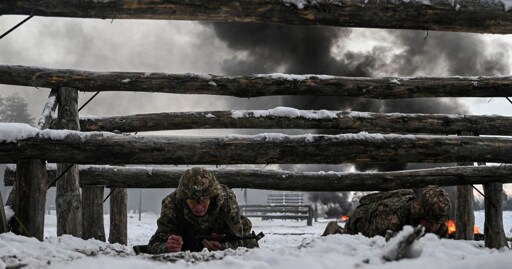Author: Unknown
Published on: 23/01/2025 | 00:00:00
AI Summary:
Ukraine has increasingly been under pressure from its Western allies to start mobilizing young men under the age of 25. This came after the mobilization law passed in April did not deliver the expected number of recruits. Even the lowering of medical requirements – allowing men who had had HIV and tuberculosis infections to serve – did not help much. Some pro-Western Ukrainian officials have also pressed for lowering the age. So far President Volodymyr Zelenskyy has refused to move In 2021, Ukraine occupied the eighth place in the ranking of countries with the most international migrants – more than 600,000 left in that year alone. In 2020, Prime Minister Denys Shmyhal admitted that the state will struggle to pay state pensions in a decade and a half. After years of declining state capacity and de-development, Ukrainians were unsurprised. In September 2023, Minister of Social Policy Oksana Zholnovich called on citizens not to remain dependent on benefits, since this makes them “children” The government announced it was not going to increase the minimum wage and social security payments in 2025 despite inflation reaching 12 percent. The narrative of fighting an existential war no longer seems to move the majority of Ukrainians. A June survey showed that only 32 percent “fully or partly supported” the new mobilisation law. A mere 27 percent believed that forced mobilization was necessary to solve issues at the front line. The mobilization authorities have launched investigations against 500,000 men for draft evasion so far. In one case made public in early October, a top medical official amassed a fortune taking bribes to facilitate draft-dodging through disability slips. Since 2022, 45 Ukrainians have drowned in the Tysa River on the border with Romania and Hungary in desperate attempts to flee. There have been multiple cases of Ukrainian men trying to escape the country shot and killed by their own country’s border patrol. In a July Facebook post, a mobilised Ukrainian journalist bemoaned the lack of patriotism among his fellow conscripts. He wrote that most of the people he served with were from poor, rural regions. His attempts to remind them of their patriotic duty failed to convince them. These soldiers certainly aren’t insufficiently acquainted with the realities of war. A number of high-profile patriotic journalists and activists have called for mass mobilisation. They are seeking exemptions on medical or other grounds. Many of these organisations are not involved in maintaining critical infrastructure. Anticorruption serves more often than not as a justification for neoliberal policies. Ironically, the dismantling of state enterprises driven by such considerations severely weakened Ukraine’s massive Soviet-era military-industrial complex after 2014. But instead of blaming themselves for the current state of affairs, the nationalists tend to blame the Ukrainian people. The disconnect Ukraine’s growing setbacks in the war cannot be attributed to Russia’s overwhelming power or insufficient Western aid. Consider not only Vietnam in the 1960s and 1970s and Afghanistan 1979 – 2021, but also revolutionary France after 1789 and revolutionary Russia after 1917. Ukraine is unable to fully mobilize its people divided by a profound sociopolitical disconnect. Contrary to the popular narrative of national unity, there has been no cohesive project of national development to bridge the divide between those bearing the brunt of the war and the political and intellectual elites who claim to represent them both at home and abroad. This disconnect undermines the idea of a shared purpose driving the nation forward. Fear of losing one’s home to invasion measured against fear of forced conscription. Fear of being humiliated as khokhol by Russians or as a Russian-speaking mankurt. These shifting fears drive the Ukrainian population, but they do not unite it.
Original: 3298 words
Summary: 642 words
Percent reduction: 80.53%

